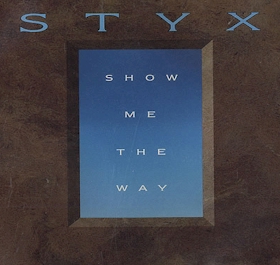 We have been at war so long, it is difficult to recall a time when we were not at war. ‘Twas not always so. There was, in fact, a period when the idea of being at war was a new and frightening thing, for people of a certain age. Twenty years ago, the first Gulf War introduced a generation who had come of age after the end of the Vietnam War to the fears and uncertainties that had been the norm for those who lived a generation before. Although, in terms of lives lost and time and treasure expended, the effort to extract Saddam Hussein from Kuwait pales in comparison to our current situation, in 1990 and early 1991, the nation had little to use as reference except Vietnam, and most were understandably skittish about their loved ones’ participation in desert warfare.
We have been at war so long, it is difficult to recall a time when we were not at war. ‘Twas not always so. There was, in fact, a period when the idea of being at war was a new and frightening thing, for people of a certain age. Twenty years ago, the first Gulf War introduced a generation who had come of age after the end of the Vietnam War to the fears and uncertainties that had been the norm for those who lived a generation before. Although, in terms of lives lost and time and treasure expended, the effort to extract Saddam Hussein from Kuwait pales in comparison to our current situation, in 1990 and early 1991, the nation had little to use as reference except Vietnam, and most were understandably skittish about their loved ones’ participation in desert warfare.
In many ways, the first Gulf War was conducted and portrayed in such a way as to make amends for Vietnam—not to apologize for it, but to gather support at home for a military that had, as an institution, suffered from nightly television coverage of death and destruction, from horrific events like My Lai, from political upheaval at the highest levels of our government, and from general cultural insanity back home. Everything about the first Gulf War was calibrated by the powers that drove it, to shape the perceptions of the war effort in the U.S., and to contribute to a general “Support the Troops” ethos that had eluded the country in the wake of Vietnam, the lack of which had haunted military brass for two decades.
 Today’s wars in Iraq, Afghanistan, and now Libya have made us so very aware of the sacrifices of our soldiers and, by extension, their families—of the dangers they face; the potential for grievous injuries; the time away from their loved ones; the emotional and, in many cases, financial tolls they’ve incurred; and the weariness of being virtually the only group asked bear the burden for a war effort that has gone on too long, for too little, at too great a cost. The first Gulf War’s tight media coverage, “clinical” execution, and compressed timeframe hid these sacrifices from public view, with most tension relieved by the parades and rah-rah welcomes when the bulk of the troops came home.
Today’s wars in Iraq, Afghanistan, and now Libya have made us so very aware of the sacrifices of our soldiers and, by extension, their families—of the dangers they face; the potential for grievous injuries; the time away from their loved ones; the emotional and, in many cases, financial tolls they’ve incurred; and the weariness of being virtually the only group asked bear the burden for a war effort that has gone on too long, for too little, at too great a cost. The first Gulf War’s tight media coverage, “clinical” execution, and compressed timeframe hid these sacrifices from public view, with most tension relieved by the parades and rah-rah welcomes when the bulk of the troops came home.
The fear of the unknown, however, was real at the outset of the war, and folks at home and abroad found meaning in unlikely places. Like a Styx song. “Show Me the Way” was written by front man Dennis DeYoung as an encouragement for keeping one’s faith—in God and/or humanity—in a world in which hatred and destruction seemed to lurk around every corner.
DeYoung bemoans the fact that, even in adulthood, one could be disappointed by those he held in high esteem—saints who turn into sinners, childhood heroes who “have fallen to idols of clay.” All are “illusions” to be washed away at the metaphorical “river” to which preachers have taken sinners since they days of Christ himself, to be baptized into belief. This time, though, DeYoung asks to be cleansed not from sin, but from fantasy, from false impressions. It’s a fascinating conundrum—he wants to believe less, in order to believe more.
Listeners worried about war latched on to the second verse:
And as I slowly drift to sleep
For a moment dreams are sacred
I close my eyes and know that there’s peace
In a world so filled with hatred
That I wake up each morning and turn on the news
To find we’ve so far to go
And I keep on hoping for a sign
So afraid I just won’t know
 We were all waking up to what we perceived to be the realities of war—machines and explosives and weapons and good men and women fighting for us and bad, determined enemies fighting against us. This was the narrative we believed, the one we were given, the illusions we could not seem to wash away. Military families, however, were giving so much more—to wake up and “find we’ve so far to go” meant more meals they wouldn’t have with their loved ones, more questions from their children, more jumping every time the phone rang or there was a knock on the door, for fear of what news might be awaiting them.
We were all waking up to what we perceived to be the realities of war—machines and explosives and weapons and good men and women fighting for us and bad, determined enemies fighting against us. This was the narrative we believed, the one we were given, the illusions we could not seem to wash away. Military families, however, were giving so much more—to wake up and “find we’ve so far to go” meant more meals they wouldn’t have with their loved ones, more questions from their children, more jumping every time the phone rang or there was a knock on the door, for fear of what news might be awaiting them.
Disc jockeys keyed in on this uncertainty, and began mixing news audio and interviews with military wives and kids into the instrumental breaks of “Show Me the Way.” I loathed the practice then and I loathe it now—the cynical attempt to tug on listeners’ heart strings, using the voices of those suffering and sacrificing the most as bait. You heard it everywhere, though—the song steadily climbed the charts, becoming one of Styx’s biggest hits (to this day, their last time in the Top Ten) and, along with such pabulum as Lee Greenwood’s “God Bless the U.S.A.,” a de rigueur playlist entry.
You were, however, in serious trouble if your heart could not be moved by the song’s key lyric—the brief bridge to the guitar solo section over which the bulk of the deejay edits were made. The words are inescapable, even today:
And if I see a light, should I believe?
Tell me how will I know?
Crises of faith arise when the things we believe in most let us down—people, institutions, the things we worship, the ideas and ideals we hold dear. How do we know what we truly can believe in? In 1990 and ’91, we embraced one another when we could no longer embrace the uncertainty before us. It happened again in the wake of 9/11 when, instead of us striking someone else, we ourselves were hit, and our collective confusion and pain left us holding up one another, believing in one another, even as we found so little else to strengthen our spirits.
Lots of people my age have kids who have never known a time when the United States was not at war. When that’s no longer the case—when we extract ourselves from these conflicts, when we begin to repair the people and families our wars have broken, begin to recover the things we’ve lost in the last decade, when all that happens—we’ll have something worthy of our faith, something we can truly, collectively believe in. Right now, though, we’ve so far to go—so very, very far.




Comments